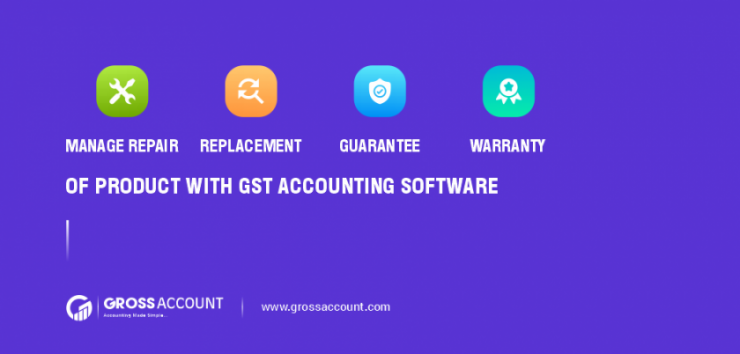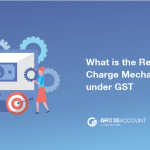Introduction:
In a rapidly growing competitive market, one of the most effective ways to win new customers is by giving away free and sample products. Offering free or sample products is a tried-and-tested marketing method used by various companies in India, and in this article, we review in detail the applicability of GST on free and sample products.
Purpose of a company:
Improve business performance, reduce warranty and service contract costs, and improve product quality through warranty analysis, fraud detection, and predictive analysis.
Improve The Quality Of Brands:
The company needs to validate all aspects of claims against comprehensive business rules and improve the quality and integrity of warranty data by incorporating clinical and mobile device data sources directly into claims forms. The solution manages the authorization of returns, generation of authorization for return of content, and tracking of returns.
The solution enables manufacturers and suppliers to cooperate in reducing warranty costs by managing supplier warranties for components and parts. You should increase revenue and profitability from maintenance, service, and parts and reduce warranty process costs by streamlining processes, eliminating duplicate data entry, and automating award claims. The company will ensure faster processing by validating claims data and allowing rich content to be captured.
Also Read: How does Accounting Software manage your GST/Non-GST Invoices?
Guarantee Warranty:
Warranty is defined as a written warranty, promising to issue or replace the purchaser of an item. So if required within a specific time period. Then the replacement of that piece of product. It is pertinent to note that the warranty covers the provision of repair/maintenance service to the customer and is therefore the very provision of service.
While the warranty appears to be an after-sales service only, it is also a determining factor in determining the nature of the supply.
To estimate a company, it should follow the following points:
- How many units of product were sold during the period the product needed to be recorded?
- What percentage of products sold will require repair or replacement based on past experience?
- What is the average cost of repair or replacement under warranty?
Repair/ Replacement:
When a customer requests a warranty repair or replacement, the customer files a claim. The company must file this claim. Whenever the company addresses a claim, a part of the warranty obligation is also met. In other words, every time a claim is present, the company should reduce the amount of liability for the cost of participating in the claim. There are several ways by which a company can fulfill a claim.
You can replace the item with inventory by reducing the inventory. The business can repair the product using inventory and external labor (which will require cash) or inside (wage payable) parts of labor. Always record the replacement or repair at cost, not at the retail price of the item or parts.
Warranty/ Warranty Upgrade:
Capture claim failure information including cause party, date, repair location, claim, cause of repair, cause, corrective action, internal and external comments, and claim attachment. See claim payment information, including requested amount, accepted amount, and deposit for parts, labor, and other charges. You will also create dashboards and generate reports based on user-based metrics, requirements, and criteria and track claims based on cost, model, or category, and review claim counts, parts costs, and claims.
Total Labor Cost. It also detects emerging product quality issues and manages warranty accruals and service plan earnings in an appropriate program, and exports the report as an Excel or Acrobat PDF file.
These are the following factors by which we can improve the quality of the warranty or guarantee:
- Service plan.
- Service. Provide relevant service plans to increase connection and renewal rates.
- Yes. Manage and track standard manufacturer warranties and extended service plans.
- Warranty eligibility.
- Service. Determine warranty eligibility for qualified repairs.
- Yes. Assign the responsibility of the provider to the claim.
- Identify and require a major part that causes failure.
- Take good mistake details to include,
- Complaint (operating status report or symptoms)
- Reason (root cause or physical description)
GST Guidelines:
To download accounting and billing software from the GST portal, the taxpayer must log in to the GST Portal with valid credentials. As per the instructions of the GST Council, GSTN has partnered with some billing and accounting software vendors to provide free software to micro, small and medium-sized businesses with an annual turnover of fewer than 1.5 crores in a financial year.
The facility is made available to active general taxpayers, developers of SEZ / SEZ units, and taxpayers opting for a compounding scheme under the GST regime. It will be available free of charge to eligible taxpayers until 03/31/2021 or until the taxpayer’s annual turnover falls below 1.5 Cr in a financial year, after which taxpayers may be required to pay a fee. the provider.
This will be available to eligible taxpayers until 03/31/2021 or until the taxpayer’s annual turnover falls below 1.5 Cr in a financial year, after which taxpayers may have to pay a fee. the provider. To use facilities other than those listed free or to use the software beyond the initial free period, the taxpayer may visit the respective provider’s product site to determine the fee, if applicable.
In the GST regime, a taxpayer must maintain all types of accounts and records related to GST transactions, such as inputs (purchase), output product (sales), production, input credit, production tax, inventory, import-export, reverse. Incharge, Adi Goods and Services Tax (GST) has simplified the indirect system in India with a “one nation, one tax” approach. It has also streamlined business and accounting processes that ensure greater transparency in business reporting and compliance.
Conclusion
The most important thing to understand about claim cost control is benefits to the consumer. Insurance claims cost. If you control the cost of claims, you control the price paid for insurance. It is not about paying less than the settlement amount of the claim; It is about paying what is outstanding and what is required at a fair price, In facts, there were several same factors are associated with this and we just have to focus on that to optimize GST data ad well as several other functions of the whole system.






